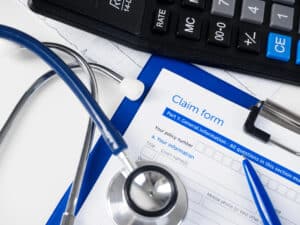Road rage involves various aggressive driving maneuvers that escalate tensions on the road. Tailgating, when a driver follows too closely, and aggressive weaving between lanes are common manifestations. Excessive speeding, aggressive horn usage, and abrupt lane changes contribute to the hostile environment.
Drivers who engage in intimidating behaviors, such as flashing headlights or aggressive gestures, fuel road rage incidents. In extreme cases, deliberate actions like brake-checking, blocking, or even physical confrontations can occur. These aggressive driving maneuvers endanger safety and contribute to escalating conflicts on the road.
If you suffered injuries in a car accident that resulted from an enraged driver, you have legal options available. A skilled Phoenix car accident attorney in your area can evaluate those options and take the necessary steps to recover the compensation you deserve for your injuries. For example, your lawyer can initiate a personal injury claim with the at-fault driver's insurance company or file a lawsuit in the court system on your behalf.
Types of Traffic Accidents That Result from Road Rage

Traffic accidents resulting from another driver's road rage often manifest in various forms, each presenting distinct risks and consequences:
- Rear-end Collisions — These are a frequent outcome, as aggressive drivers tailgate or engage in abrupt braking maneuvers, increasing the likelihood of collisions with vehicles following closely behind.
- Sideswipe Collisions — Sideswiping incidents are another common consequence of road rage. Aggressive lane changes, weaving between vehicles, or intentionally encroaching on other lanes can lead to sideswiping collisions, particularly in congested traffic conditions where there is limited space for maneuvering.
- Deliberate Aggressive Behaviors — Forceful and deliberate actions, such as brake-checking or sudden stops, contribute to collisions at intersections. The aggressive driver may intentionally create hazardous situations, leading to T-bone or broadside collisions when other vehicles cannot react swiftly to unexpected maneuvers.
- Aggressive Passing — Aggressive passing maneuvers can result in head-on collisions. Attempting to pass other vehicles aggressively, especially on narrow roads or in oncoming traffic, significantly heightens the risk of frontal collisions, which can have severe consequences for all parties involved.
- Vehicular Pursuits — Road rage incidents can escalate to vehicular pursuits or chases, leading to high-speed accidents. The aggressive driver may engage in reckless behavior, such as speeding, tailgating, or sudden lane changes, creating a dangerous environment that increases the likelihood of catastrophic collisions.
- Intentional Ramming — Intentional ramming or collisions may occur when road rage escalates to physical altercations. Aggressive drivers may deliberately target other vehicles, leading to intentional collisions that can cause considerable damage, injuries, or even fatalities.
- Multi-vehicle Collisions — Road rage incidents can contribute to multi-vehicle accidents, especially when aggressive behaviors create chaos on the road. The unpredictable actions of an aggressive driver can trigger a chain reaction involving multiple vehicles, resulting in complex and widespread collisions.
Traffic accidents resulting from another driver's road rage encompass a range of scenarios, from rear-end collisions and sideswiping incidents to collisions at intersections, head-on collisions, high-speed accidents, intentional ramming, and multi-vehicle collisions. The intentional and aggressive actions of drivers engaged in road rage create hazardous conditions on the road, leading to several types of accidents with potentially severe consequences for all parties involved.
The aftermath of such accidents requires prompt medical attention, legal intervention, and a comprehensive approach to recovering from the physical, emotional, and financial toll rage incidents inflict.
Common Injuries in Road Rage Accidents
Victims of road rage accidents often suffer a range of injuries due to another driver's negligence. Head injuries are prevalent, ranging from concussions to more severe traumatic brain injuries. The aggressive and reckless behaviors associated with road rage can lead to forceful impacts, increasing the risk of head injuries that may have lasting cognitive effects.
Spinal injuries, including fractures and damage to the spinal cord, are also common in road rage accidents. The forceful nature of collisions and aggressive maneuvers can result in significant trauma to the spine, affecting mobility and causing long-term consequences.
Victims of road rage accidents frequently sustain orthopedic injuries, such as fractures, dislocations, and severe sprains. The abrupt and forceful nature of road rage incidents can cause substantial damage to limbs and joints, leading to painful fractures or injuries that require extensive medical treatment.
Soft tissue injuries, like bruises, strains, and sprains, are also prevalent. The aggressive driving behaviors associated with road rage often lead to sudden accelerations, decelerations, or impacts, causing stress and strain on soft tissues, resulting in pain and discomfort for victims.
Psychological injuries, such as anxiety, post-traumatic stress disorder (PTSD), and emotional distress, are common consequences of road rage accidents. The traumatic nature of these incidents, coupled with the intentional aggressive actions of the at-fault driver, can leave victims with enduring psychological scars that affect their overall well-being.
Additionally, victims may suffer internal injuries, such as organ damage or internal bleeding, particularly when road rage incidents escalate to physical altercations or collisions involving aggressive maneuvers. These injuries may not be immediately apparent but can have serious consequences if not promptly addressed.
The aggressive driving maneuvers involved in road rage accidents often heighten the severity of injuries that accident victims sustain. High-speed collisions, abrupt lane changes, and deliberate actions like brake-checking increase the risk of severe injuries, contributing to the physical and emotional toll on victims.
Victims of road rage accidents frequently suffer a range of injuries due to another driver's negligence. From head injuries and spinal trauma to orthopedic injuries, soft tissue damage, psychological distress, and internal injuries, the consequences can be severe and affect various aspects of the victim's life. Seeking immediate medical attention and legal recourse is crucial for addressing the physical, emotional, and financial challenges resulting from road rage accidents that another driver's negligence has caused.
How Do You Prove Road Rage?

Proving the elements of duty, breach, causation, and damage in a road rage accident case involves a comprehensive presentation of evidence:
- The duty of care requires establishing that the at-fault driver owed a reasonable duty to drive safely and avoid engaging in aggressive or reckless behaviors.
- To demonstrate a breach of duty, the evidence must highlight how the at-fault driver violated this duty of care. This can involve aggressive driving behaviors, such as tailgating, aggressive weaving between lanes, excessive speeding, or making aggressive gestures. Eyewitness accounts, video footage, and police reports can contribute to establishing the breach of duty.
- Causation necessitates establishing a direct link between the at-fault driver's breach of duty and the resulting road rage accident. Proving causation involves demonstrating that the aggressive behaviors directly led to the collision and subsequent injuries. Medical records, expert testimony, and accident reconstruction analyses can contribute to establishing this crucial link.
- Damage refers to the actual harm the victim suffers due to the road rage accident. Documenting injuries, medical treatments, and the repercussions on daily life and work is essential. Providing medical records, bills, and expert opinions on the lasting effects of the injuries helps quantify the damages incurred.
Expert witnesses, such as accident reconstruction specialists or medical professionals, can play a key role in substantiating these elements. Their testimony can provide:
- A comprehensive understanding of the duty owed.
- The breach of that duty.
- The causal connection between the breach and the accident.
- The extent of the damages sustained.
In addition, eyewitness accounts from individuals who observed the aggressive driving behaviors leading up to the accident can corroborate the victim's version of events. Whether from traffic cameras or witness recordings, video footage can serve as powerful evidence, providing a visual record of the at-fault driver's aggressive actions and their repercussions on the road rage incident.
Proving the duty, breach, causation, and damage elements in a road rage accident case involves a meticulous presentation of evidence. Eyewitness accounts, expert testimony, medical records, and video footage contribute to establishing the at-fault driver's breach of duty, the direct causation of the accident, and the resulting damages the victim suffered. This comprehensive approach enhances the strength of the case and positions the victim for a fair and just resolution.
Settling a Car Accident Case Favorably
Dealing with the at-fault driver's insurance company following a road rage accident requires a strategic and proactive approach. You – and ideally, your car accident attorney – should take the following steps following a road rage accident:
- Promptly report the incident to the insurance company, providing a detailed account of the accident, including the date, time, location, and a factual description of what transpired. Clearly articulate the aggressive behaviors the at-fault driver exhibited during the road rage incident.
- Gather and organize relevant evidence to support your claim. This may include photographs of the accident scene, vehicle damage, any visible injuries, and documentation such as the police report. Eyewitness statements and contact information can further strengthen your case.
- Be thorough in documenting your injuries and medical treatment. Provide the insurance company copies of medical records, bills, and any prescriptions related to the road rage accident. Detail the consequences of the injuries for your daily life, work, and overall well-being.
- Communicate assertively and maintain a consistent narrative when dealing with the insurance company. Clearly express the damages incurred, both tangible and intangible, such as medical expenses, pain and suffering, lost income, and any ongoing treatment needs. Keep a record of all communications, including emails and phone conversations, to maintain a comprehensive account of your interactions.
- Consider obtaining a professional opinion or expert testimony regarding your injuries and the associated damages. This can lend credibility to your claim and provide additional support when negotiating with the insurance company.
- Do not accept a settlement offer hastily. Take the time to thoroughly review any proposed settlements and ensure they adequately address the extent of your damages.
- Be vigilant about deadlines and adhere to the required timelines for filing claims and providing requested documentation. Delays can adversely affect the processing of your claim and potentially limit your ability to recover the full extent of damages.
Recovering Compensation for Injuries in a Road Rage Accident

Injuries resulting from a road rage accident a negligent driver caused can lead to a range of compensable damages. These include the following:
- Medical Expenses — Medical expenses, both past and future, form a significant portion of compensatory damages. Costs related to emergency medical care, surgeries, rehabilitation, medications, and any ongoing treatments are recoverable. Proving the necessity and reasonableness of these expenses is crucial for obtaining adequate compensation.
- Lost Earnings — Lost earnings are compensable when injuries result in missed work days or prolonged absence from the workplace. Whether due to immediate recovery needs or ongoing treatments, compensation for lost income acknowledges the financial burden endured during the recovery period.
- Loss of Earning Capacity — Loss of earning capacity accounts for the effects of injuries on the victim's ability to perform their usual job duties. When injuries hinder professional growth or limit career advancement opportunities, compensation aims to address the lasting consequences on earning potential.
- Loss of Use of a Body Part — Loss of use of a body reflects the impairment or disability the road rage accident caused. This can involve limitations in mobility, dexterity, or sensory functions. Compensation for this loss accounts for both the immediate and long-term effects on the victim's ability to perform daily activities.
- Physical Pain and Suffering — Physical pain and suffering, encompassing immediate and enduring physical distress, is a fundamental component of compensation. This includes the pain experienced during and after the accident, along with any ongoing discomfort or limitations resulting from the injuries.
- Mental Distress — Mental distress arising from the emotional trauma of the incident is a valid claim. The psychological toll, including anxiety, post-traumatic stress disorder (PTSD), or other mental health issues, warrants compensation.
- Loss of Consortium — Loss of consortium compensates for the adverse effects the injuries have on familial relationships. When the victim's injuries impede their ability to provide companionship, support, or other integral elements of the relationship, compensation seeks to address the strain on family bonds.
Compensation for injuries from a road rage accident covers various losses. From medical expenses, lost earnings, loss of earning capacity, loss of use of a body part, physical pain and suffering, and mental distress to loss of consortium, the legal recourse aims to comprehensively address the multifaceted effects of injuries resulting from the negligent actions of a driver engaged in road rage. Each component seeks to provide fair and just compensation for the physical, financial, and emotional toll inflicted upon the victim.
Call an Experienced Car Accident Lawyer in Your Area Today

If you sustained injuries in a traffic accident that resulted from another driver’s road rage, talk with a knowledgeable car accident lawyer in your area as quickly as possible. Your lawyer can investigate your accident circumstances and go over potential legal options with you. Your lawyer can also handle the legal steps of your case, including pursuing a claim with the at-fault driver's insurance company or litigating your case in the court system to a favorable conclusion.